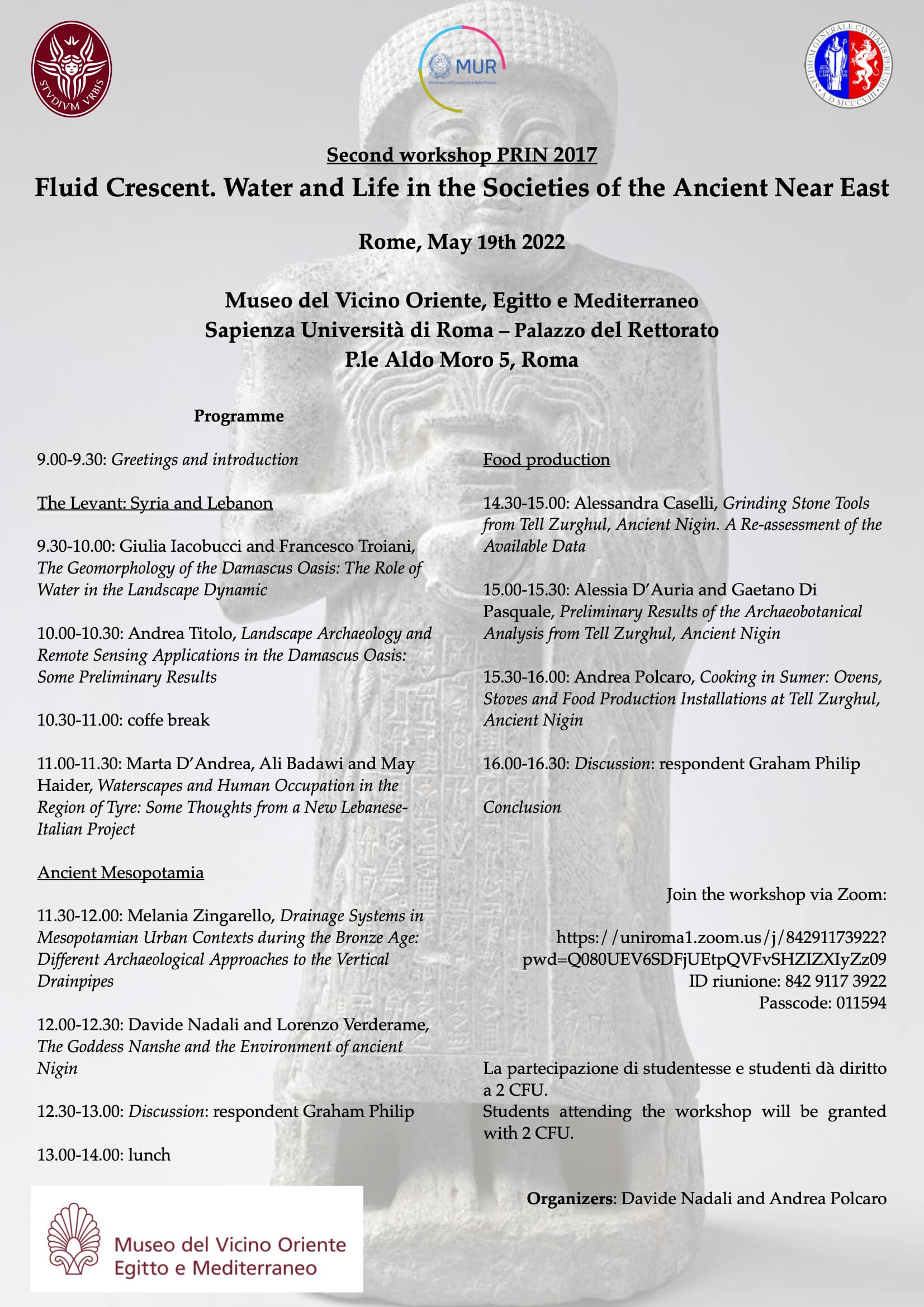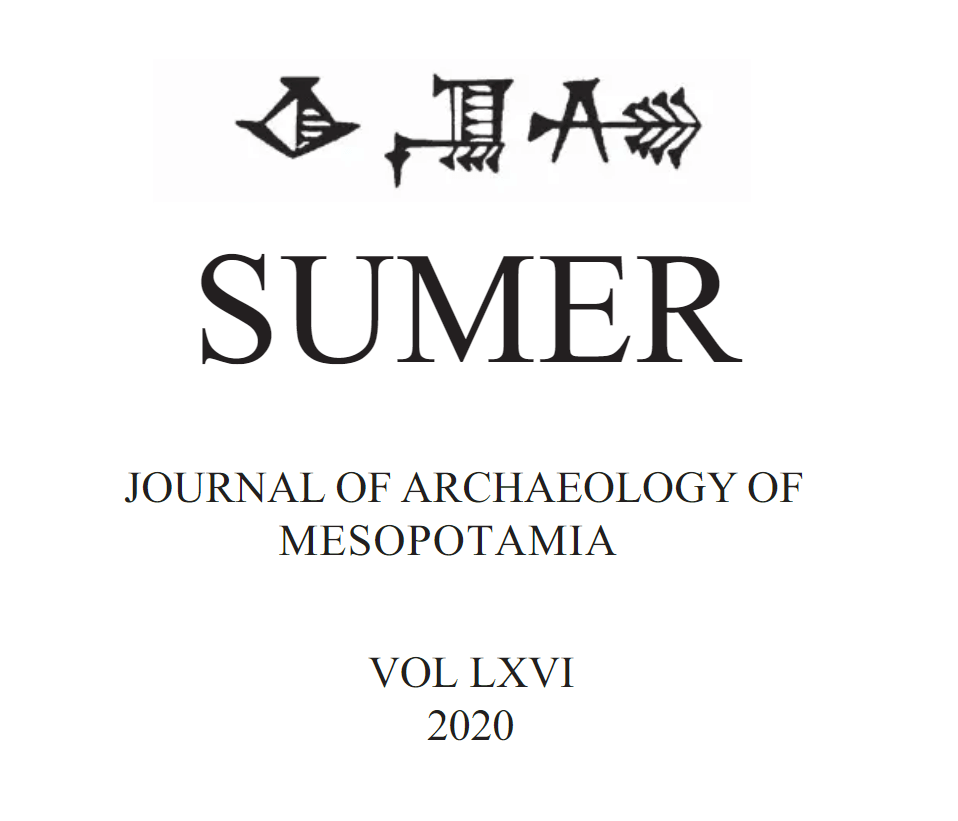The second Workshop PRIN 2017 will take place on May 19th at the Museo del vicino Oriente, Egitto e Mediterraneo. Sapienza Università di Roma – Palazzo del rettorato. P.le Aldo Moro 5, Roma. See details below:

Davide Nadali and Andrea Polcaro, 2020, Italian Archaeological Expedition to Nigin, Southern Iraq: New Results from Recent Excavations
Tell Zurghul, the ancient Sumerian Nigin in the ancient State of Lagash, is currently excavated by a joint Italian archaeological expedition of Sapienza University of Rome and University of Perugia since 2014. The paper presents the results of the most recent excavation campaigns carried out in 2016 and 2017 covering three areas (A, B, and D) in the central region of the site and a survey carried out along the western edge of the city (Area C). Recent agreements with the Department of Geology of both Perugia and Rome aimed at the study of the hydro-geological morphology of the site with special focus on the investigation of the areas once covered by water, i.e. the presence of marshes and canals, as the same Gudea of Lagash mentions in his inscriptions. Furthermore, the study also encompasses the analysis of the ancient shape of the city across time, from the Ubaid to the late third/beginning of the second Millennium BC.


